Nothing escapes from a black hole, and now astronomers have proof
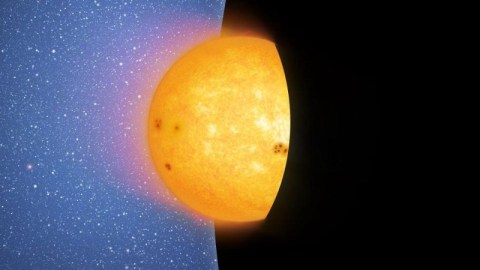
The event horizon is real, and we know it without even needing to see it directly.
“Where we’re going, we won’t need eyes to see.” –Sam Neill, Event Horizon
If you collect more and more matter in a small enough volume of space, it gets harder and harder to escape from its gravitational pull. Gather enough mass there, and you’ll find that the speed you’d need to reach in order to escape is greater than the speed of light! From within that region, escape is impossible, and you have a black hole. From farther out, where the escape velocity is lower than the speed of light, matter and radiation can make it out. The border of these two regions is known as the event horizon, and is one of the most important predictions of General Relativity that’s never been tested. Until now, that is, where the signs that matter completely disappears when it crosses over cannot be ignored.
At the center of our galaxy, we find the largest black hole within more than a million light years. By observing the orbits of the stars in its vicinity, we can determine that there’s an object with:
- the mass of around 4 million Suns,
- that occasionally flares in certain wavelengths (X-ray and radio) of light,
- that emits no visible/infrared light,
- and that is consistent with a black hole.
But we’ve never determined whether it truly has an event horizon or not. Sure, General Relativity has been successful every time we’ve been able to test it out, but every new challenge is a new opportunity to learn something new about the Universe.

There are always alternatives to consider, and there are a whole class of modifications to gravity we can make that make it possible for event horizons to not exist at all. In these scenarios, instead of an event horizon surrounding a singularity, a giant mass like this would have a hard surface that objects could smash themselves against. If this were the case, you’d be able to tell the difference in one of two ways. The first (and most obvious) way would be with direct imaging: if you achieved sufficiently good resolution, a telescope would be able to see the event horizon for itself… or to find no horizon at all, if one of the alternatives to General Relativity were true. The Event Horizon Telescope, whose first results are due out later this year, should be able to see whether an event horizon really exists.
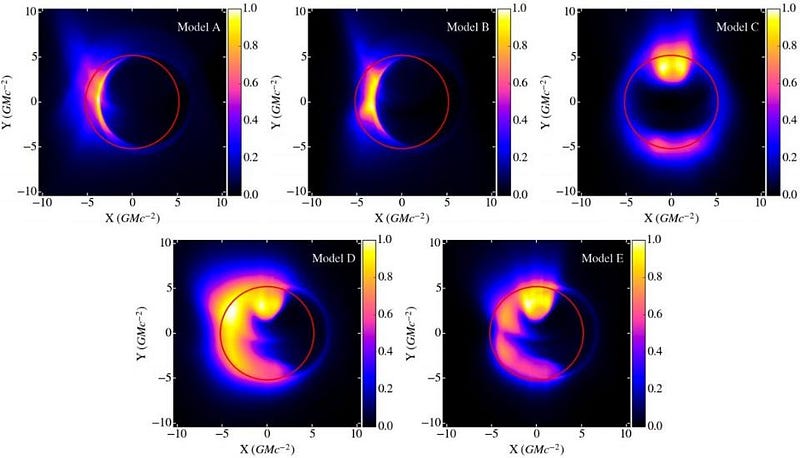
But there’s a second way that doesn’t rely on direct imaging, and can find the answer anyway. Supermassive black holes occur not only at our own galaxy’s center, but at the central cores of most large galaxies throughout the Universe. Our Milky Way’s black hole, at four million solar masses, may actually be on the low end: many galaxies have black holes that extend up into the billions or even tens of billions of solar masses. The bigger a black hole is, the larger the cross-sectional area of its event horizon is predicted to be, meaning that it has a much larger chance for a passing object to impact it.
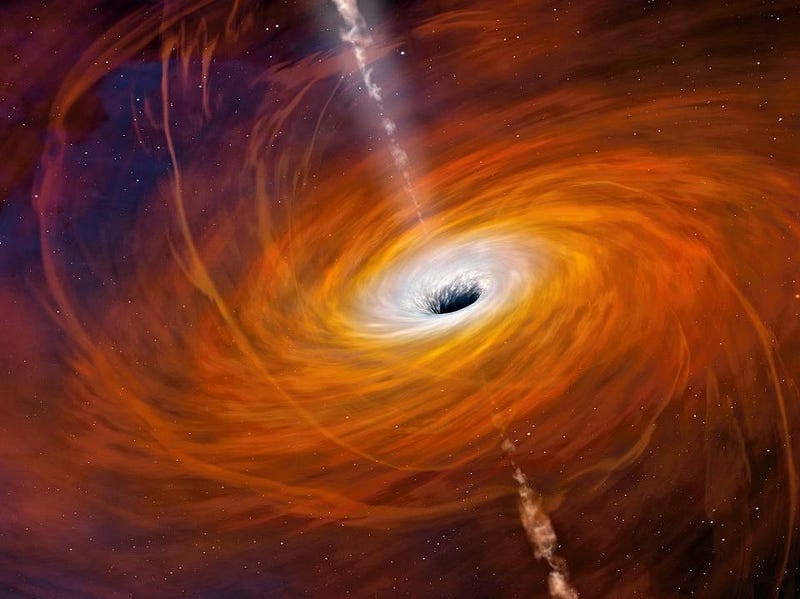
The largest known black holes have diameters about ten times the size of Pluto’s orbit, meaning that if we view very large numbers of them for long enough, we should witness a star running into one of them eventually. The Pan-STARRS telescope, having just completed a huge set of deep observations for 3.5 years — covering some 3/4ths of the entire sky repeatedly — was able to look for transient events, or temporary brightenings and dimmings. If event horizons are real, swallowed stars wouldn’t create a transient signal, but star colliding with a hard surface would create a significant burst of light.
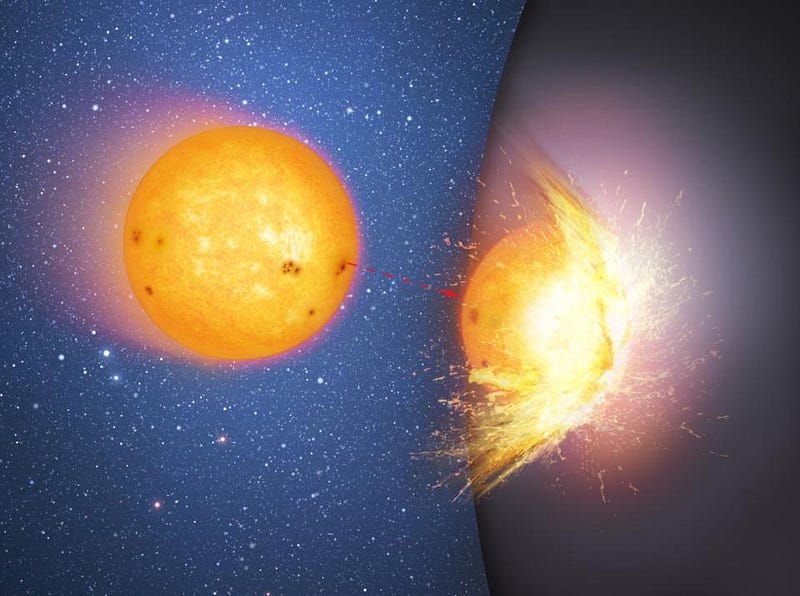
According to Wenbin Lu, a scientist who studied these observations to test the hard-surface theory,
Given the rate of stars falling onto black holes and the number density of black holes in the nearby universe, we calculated how many such transients Pan-STARRS should have detected over a period of operation of 3.5 years. It turns out it should have detected more than 10 of them, if the hard-surface theory is true.
Given all the black holes with masses greater than 100 million solar masses, there should have been a definitive signature if there’s a hard surface outside of the black hole’s event horizon. Yet no signature at all was seen.

Ramesh Narayan, a coauthor on the new study, was happy to articulate what it all meant,
Our work implies that some, and perhaps all, black holes have event horizons and that material really does disappear from the observable universe when pulled into these exotic objects, as we’ve expected for decades. General Relativity has passed another critical test.
Of course, it’s not really possible to prove that the event horizon is real, but this work allows some impressive constraints to be placed.
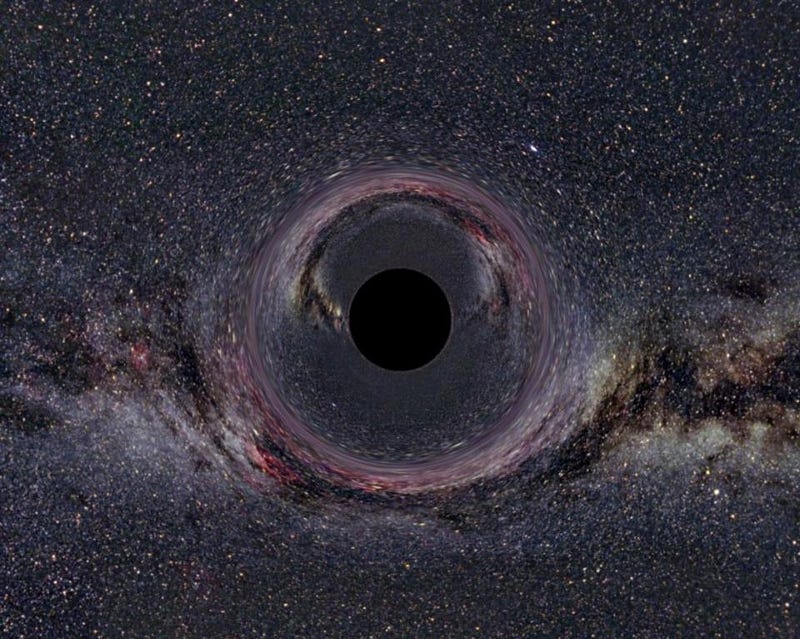
If there is a hard surface, it must be within 0.01% the radius of the expected event horizon, given the lack of transient signals observed. A heat signature in the optical/infrared would be expected, which is exactly what Pan-STARRS would be sensitive to. Yet nothing was observed. In the future, the Large Synoptic Survey Telescope (LSST), which will have more than 20 times the light-gathering power of Pan-STARRS, will be able to constraint the event horizon to a ridiculously small size. But the LSST won’t begin doing science until 2021, if things remain on schedule.
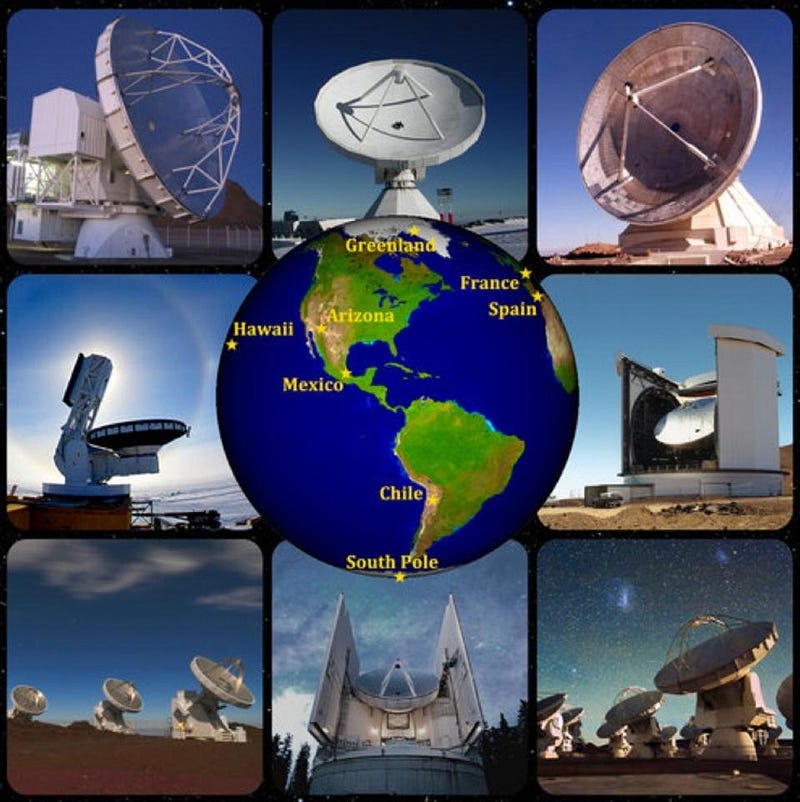
By that point, the data from the Event Horizon Telescope will already be in. If the event horizon is actually, physically real, we won’t need indirect proof like this; we’ll already have a picture. In the meantime, we should celebrate the new evidence we have, and recognize what it means: when something falls into a black hole, there is no bounce-back, shattering, or ejecta from within. Once you slip past the event horizon, you’re destined to fall all the way into the central singularity. As far as black holes go, there really is a point of no return.
Ethan Siegel is the author of Beyond the Galaxy and Treknology. You can pre-order his third book, currently in development: the Encyclopaedia Cosmologica.





